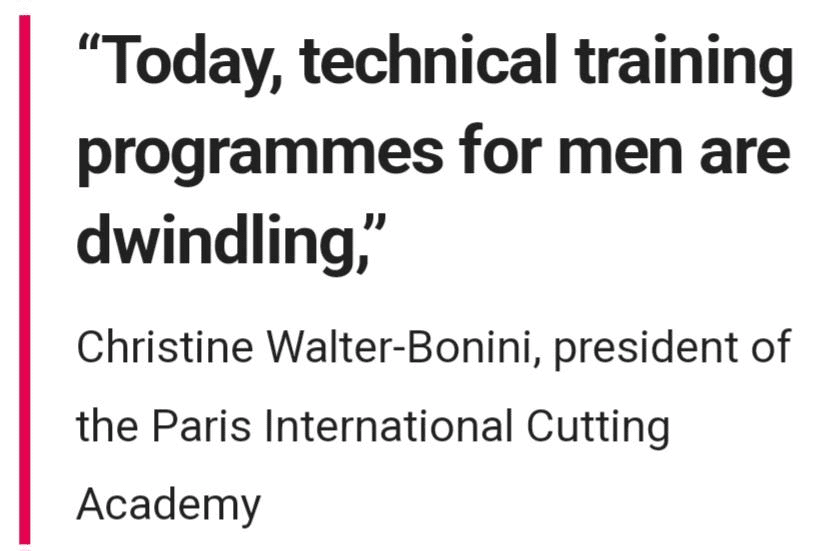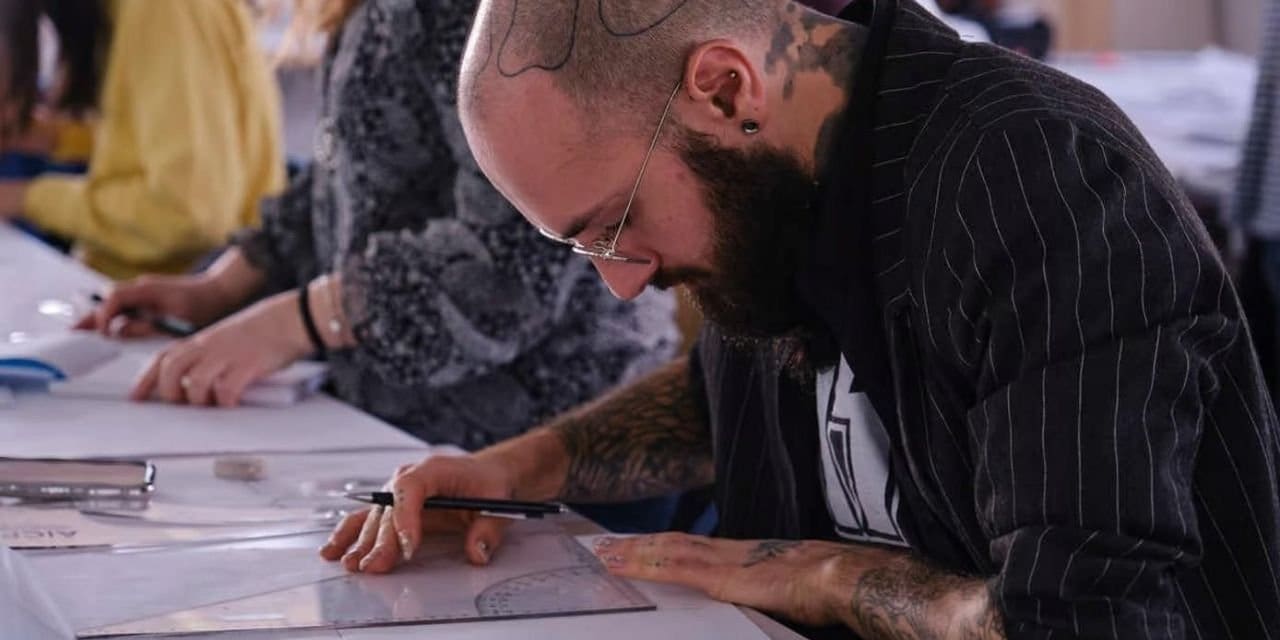The discerning consumer base is driving a growth in demand for high-quality, well-made apparel in the menswear business. By 2028, analysts project that the global market will grow to $642.95 billion. Nonetheless, there remains a skills shortage in the sector for pattern-making, tailoring, and workmanship. Who will continue to expand the sector and fill these responsibilities is the unanswered question. Closing this gap will be necessary for menswear to fulfil the growing demand for sophisticated, high-quality apparel.
Christine Walter-Bonini talks about the expansion of men’s ready-to-wear in an interview, as well as the Paris International Cutting Academy’s initiatives to assist business players in this dynamic field.
AICP family rooted in menswear.
The AICP, founded in 1830 by tailors, has a history steeped in menswear. Led by tailors like Monsieur Darroux and later acquired by the Vauclair family in 1968, the school underwent a strategic shift towards industrialization techniques to adapt to the growing ready-to-wear market. This evolution has allowed the AICP to remain relevant and competitive in the fashion industry.

Changing environment
Walter-Bonini discusses her passion for menswear and the growing trend in menswear that she believes is the result of many different inspirations.
Menswear had major obstacles in manufacturing and distribution during the Covid-19 pandemic. On the other hand, menswear has seen a resurgence in popularity recently. This change in demand can be ascribed to shifting consumer preferences, especially in the case of men, young men, and teenagers who are becoming more conscious of their look and fashion. As a result, a lot of companies that had previously stopped making menswear or had only concentrated on womenswear have now resumed making it. These days, guys want well-made, high-quality clothes that express their own tastes and sense of style. Menswear’s legacy and workmanship are also becoming more and more valued, as evidenced by the increased demand for half-measures and made-to-measure items. This pattern demonstrates how men’s tastes and interests in the fashion business are changing.
Market demands skills now.
The industry lacks technical capabilities, which presents hurdles despite the growing interest in menswear. There is a lack of skilled knowledge as a result of the emphasis on mass production and throwaway clothing, which has resulted to a dearth of technical abilities required for design, notably in pattern-making. To grow and prosper in the future, the fashion sector needs to solve this skills gap.

Walter-Bonini points out that the lack of technical training programs in model making is contributing to a shortage of qualified candidates for technical positions. Another issue is the impending wave of retirements among baby boomers, who possess valuable knowledge and expertise that is not being passed on to younger generations. This lack of skills transfer is leaving companies struggling to find suitable replacements for departing professionals.
The current crisis has created a high demand for qualified patternmakers in the sewing sector, with around 10,000 job vacancies this year. Historically, manual trades and technical skills in fashion have not received the same recognition as creative roles, but there is now a positive shift in the industry.

Reviving menswear with focus on concrete careers.
New generations are drawn to technical jobs in menswear that blend technical skills and creative expression. These roles require working with premium materials and mastering intricate techniques passed down through generations. They embody sustainability, tradition, and timelessness, catering to the desire for meaning among the workforce.
Walter-Bonini notices a rising interest in craft trades, reflected in increasing applications to the AICP. Young applicants now seek “meaningful and practical” careers working creatively with their hands, possibly influenced by the pandemic-induced experiences of confinement and global crisis. This shift in aspirations is evident through interviews and tests conducted by the organization.
There has been a rise in interest in technical areas like pattern making and tailoring, alongside fashion design, post-Covid. This shift towards craft has prompted individuals to redefine their career paths. The trend has been growing steadily over the past two years and is the driving force behind the AICP’s decision to relaunch men’s fashion training.
AICP prepares students for menswear industry with patternmaking and AI.
AICP is leading the way in training future fashion professionals to innovate and adapt to the changing industry. The school is incorporating new materials and digital technologies, such as artificial intelligence, to ensure students are prepared for the evolving fashion landscape. Students are also taught about corporate social responsibility and value chains to stay informed about the changing demands of their profession.
The president emphasizes the value of follow-up and discussions with professionals for students. AICP offers comprehensive training in menswear, covering essentials like pattern-making and garment construction, as well as opportunities to work with industry professionals on practical projects.

Walter-Bonini highlights how technological advances, such as 3D printing and AI, are influencing the menswear industry. 3D printing can create custom-fit garments, while AI can personalize clothing choices based on individual styles. The AICP is incorporating these advancements into its teaching approach.
Global AICP program trains future professionals in various countries.
The academy has a strong reputation in Asia, particularly Japan, due to its partnership with Japanese garment manufacturers for over 40 years. This collaboration, initiated by Vauclair, has enhanced the academy’s expertise in menswear. Additionally, the academy has established a network of universities and schools in Asia, making it easier to attract talented students seeking technical training.
Students at the academy are motivated to enroll due to the high value placed on technical skills in Asia. The AICP offers a unique approach that incorporates 3D techniques, providing students with a strong skill set for the future of fashion design. Additionally, the prestigious reputation of Paris and its schools in Asia attracts students who value the opportunity to learn from renowned instructors in a city known for its connection to fashion, luxury, and craftsmanship.
Future sneak peek
Walter-Bonini anticipates a bright future for menswear, with a focus on sustainability and eco-conscious practices. The role of AI in fashion creation is also a major topic of discussion, with questions about its potential to replace the human touch. The president reflects on whether AI could truly take over, with no clear answer yet.

